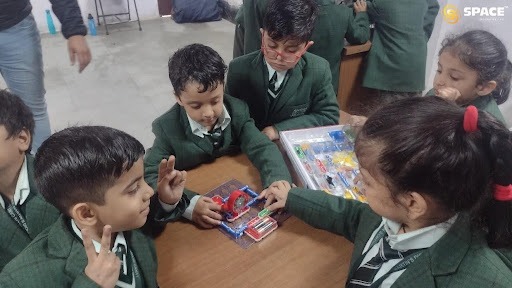In a world where technology constantly pushes the boundaries of innovation, robotics stands at the forefront, bridging the gap between science fiction and reality. Knowing the basics of robotics becomes vital as we make our way through the complex world of automation and artificial intelligence. Come along on this adventure as we explore the fundamentals of robotics and how it has shaped astronomy and education.
The design, construction, and operation of robots that can carry out activities either fully or partially autonomously is the art and science of robotics. These devices, named robots, are designed to carry out a wide range of tasks in various industries, from production lines to space exploration. The brains behind robotics are programming and control. Robots can sense their surroundings thanks to sensors, which serve as their eyes and hearing, and artificial intelligence, which gives them the ability to learn, adapt, and act on their own. Their ability to seamlessly integrate many disciplines and create a perfect symphony of technology is just as magical as their mechanical abilities.
Exploring the Cosmos with Robotics and Astronomy
In the field of observational astronomy, robotic telescopes have become pivotal instruments for astronomers. Scientists can collect data on far-off celestial objects using these remotely operated autonomous celestial observers without requiring human presence at the telescope location.
For example, At Palomar Observatory in California, there is an advanced robotic survey telescope called Zwicky Transient Facility (ZTF). ZTF has been in operation since 2018. It explores the sky for transient events like supernovae and gives scientists access to real-time data to help them understand the mysteries surrounding cosmic explosions.
To explore the possibility of life on other planets, Space rovers, and probes are now equipped with advanced robotics which deliver the invaluable data about planets, asteroids, and the moon.
Recently, the Chandrayaan-3 mission of the Indian Space Agency – ISRO in which the Pragyan rover autonomously conducted a number of observations to aid in the study of the lunar surface composition, the existence of water ice in the lunar soil, the background of lunar impacts, and the evolution of the Moon’s atmosphere.
As technology evolves, the integration of artificial intelligence and robotics is steering the development of autonomous space telescopes. These revolutionary observatories are designed to make observations in real-time and adjust to the changing cosmic circumstances without the need for continual human involvement.
The best example of an autonomous telescope is the James Webb Space Telescope (JWST) which has sophisticated robotics and artificial intelligence. JWST, which is positioned at the second Lagrange point, autonomously adjusts its mirrors and equipment to take high-resolution pictures of far-off stars, galaxies, and exoplanets.
Robotics in School and Education: Cultivating Future Innovators
Robotics in education serves as a catalyst for promoting inclusivity and diversity in STEM fields. Through involving students from various backgrounds in practical robotics activities, educational institutions help to dismantle barriers and inspire marginalized groups to pursue and succeed in occupations related to STEM fields.
Space Innovator Club
At Space India, we launched the School Innovator’s Programme, a new robotics and AI education initiative. The co-curricular program SPACE Innovator’s Club teaches students through STEAM-Based Hands-On Experiences, Experimentation, Innovation, Observation, and Analysis. It incorporates robots, drones, AI, and IoT modules.
As early as eight years old, child can construct autonomous programmable robots with the help of Innovators Club, which makes learning the fundamentals of mechanical design, coding, and design thinking enjoyable.


In conclusion, an endless future of exploration is being made possible by the mutually beneficial connection that exists between robotics, astronomy, and education. Robotics has emerged as a powerful tool for learning and exploration, both in the classroom and in the depths of our universe.
—
If you like the blog, enroll your school or yourself (k-12 student) in our School Programs or Online Programs, call us at +91-74020 74020 or write to us for any query: getintouch@space-india.com

